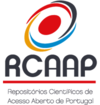Didactic approach using ICT to teach Portuguese as a Foreign Language (PFL)
DOI:
https://doi.org/10.21814/h2d.2533Keywords:
language teaching, information and communication technologies (ICT), portuguese as a foreign language (PFL), literary canonAbstract
This study aims to show a didactic approach to teach Portuguese as a Foreign Language (PFL). This approach uses Information and Communication Technologies (ICT) make easier the study of classic books from Portuguese literature. For this purpose, we have chosen the classical-literature book Vidas Secas, written by Graciliano Ramos. We have chosen the task-based language teaching (TBLT) methodology which supported us in using these modern and important tools in PFL classes. We concluded that the use of ICT is highly effective to study canonical texts, since they are a not only versatile a useful resource to language learning with communicative approach but also challenging in respect to their inclusion in PFL classes. We conclude that bringing students closer than this kind of texts using ICT can increase their motivation and interest for classical literature.
Downloads
References
Barbosa, R. M. (2005). Ambientes Virtuais de aprendizagem. Artmed.
Bateman, J. A. (2012). Multimodal Corpus‐Based Approaches. Wiley Online Library. https://onlinelibrary.wiley.com/doi/epdf/10.1002/9781405198431.wbeal0812
Becta - British Educational Communications and Technology Agency. (2004). A review of the research literature on Barriers to the uptake of ICT by teachers. https://dera.ioe.ac.uk/1603/1/becta_2004_barrierstouptake_litrev.pdf
Braga, J. de C. F. (2012). Integrando tecnologias no ensino de inglês nos anos finais do ensino fundamental. Edições SM.
Buzan, T., & Buzan, B. (1996). The Mind Map Book: Unlock your creativity, boost your memory, change your life. Plume.
Calvino, I. (1992). Por qué leer los clásicos. Tusquets.
Caribé, Y. J. A. (2017). Formando novos cânones literários: a publicação de autores contemporâneos em tradução pelo engajamento da Academia, da Crítica Literária e do Mercado Editorial. Revista Belas Infiéis, 6(2), 21–32. https://doi.org/https://doi.org/10.26512/belasinfieis.v6.n2.2017.11452
Castro, C. (2015). Ensino de línguas baseado em tarefas: da teoria à prática. Lidel.
Comissão Europeia. (2007). Competências Essenciais para a Aprendizagem ao Longo da Vida – Quadro de Referência Europeu. Serviço das Publicações Oficiais dasComunidades Europeia. https://www.dge.mec.pt/sites/default/files/Curriculo/competenciasessenciaisalv2006.pdf
Duarte, J. F. (2009). Cânone. In C. Ceia (Ed.), E-Dicionário de Termos Literários (EDTL). http://www.edtl.com.pt
Ellis, R. (1994). The study of Second Language Acquisition. Oxford University Press.
Lane, P. (2012). Multimodality and Culture. Wiley Online Library.
Leffa, V. J. (1999). Perspectivas no estudo da leitura; Texto, leitor e interação social. In V. J. Leffa & A. E. Pereira (Eds.), O ensino da leitura e produção textual; Alternativas de renovação (pp. 13–37). Educat.
Richards, J. C., & Rodgers, T. S. (2014). Approaches and Methods in Language Teaching (3rd ed.). Cambridge University Press.
Silva, V. M. de A. e (1986). Teoria da Literatura. Almedina.
Willis, D., & Willis, J. (2007). Doing Task-based Teaching. Oxford University Press.
Yunus, M. M. (2007). Malaysian ESL Teachers’ Use of ICT in Their Classrooms: Expectations and Realities. ReCALL, 19(1), 79–95. https://doi.org/https://doi.org/10.1017/S0958344007000614
Downloads
Published
How to Cite
Issue
Section
License
Copyright (c) 2020 H2D|Digital Humanities Journal

This work is licensed under a Creative Commons Attribution 4.0 International License.






